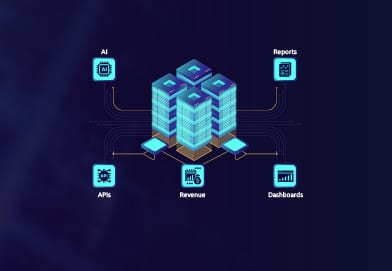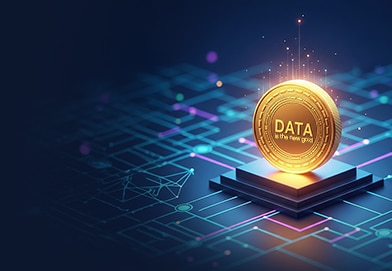When you think about the future of healthcare, you might not necessarily think about the Jetson’s cartoon. Then again, you’re probably not thinking about computational neuroscience and brain-computer interfaces (BCIs).
Imagine a world where we can predict Alzheimer’s before symptoms even appear and tailor treatments for epilepsy to each patient’s unique brain patterns. In that same world, we can provide real-time feedback to help manage depression and anxiety while predicting another episode with precision accuracy. Now, imagine we’re doing all of this with data. This isn’t science fiction–it’s the future of healthcare. In fact, it’s unfolding now.
The sheer volume of data from neuroimaging and BCIs can be overwhelming. Companies at the forefront of computational neuroscience collect and analyze massive datasets to better understand and treat neurological conditions. Advanced technologies are creating detailed simulations of neural systems, shedding light on these complex interactions.
The Human Brain: A Complex System
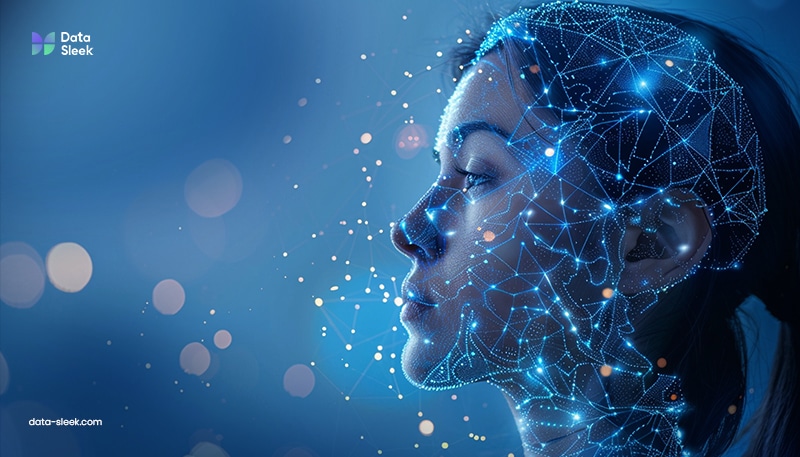
Navigating the nervous system is like trying to solve the world’s most intricate puzzle. Neuroscientists are faced with the monumental task of analyzing vast and complex datasets. This data deluge can be overwhelming. Traditional methods and simple models often fall short of capturing the dynamic and multifaceted nature of our neural engineering.
From a complex systems perspective, the brain exemplifies a truly intricate network. While we understand how individual neurons function and transmit information, the real challenge lies in deciphering how these interconnected neural networks produce higher-order functions like consciousness. This emergent property adds layers of complexity, making it difficult to unravel how systematic neural connections lead to cognitive processes and awareness.
Tackling Data Overload
The sheer volume of data from neuroimaging, electrophysiological recordings, and BCIs makes it impossible or humans to extract the full potential of data. This presets a unique quandary: collecting and analyzing vast datasets from brain implants and neural recording devices is relatively easy. Understanding brain function, neural networks, and treating neurological conditions simultaneously? That’s a different story.

Effective analysis demands a multidisciplinary approach that combines expertise in neuroscience, computer science, physics, statistics, and engineering. New technologies such as machine learning systems and artificial intelligence take computational neuroscience to an unprecedented level. The ability to process information and draw insights goes far beyond even the human brain–ironically.
Traditionally, computational neuroscience has relied on a combination of experimental data from biological or psychological experiments and limited computing power to extract insights. Now, we’re a few clicks away from a unified data view. Computational neuroscientists can produce more insights in a fraction of the time. Breakthroughs like this in computational neuroscience open exciting possibilities for breakthroughs in understanding the brain and developing new treatments.
The Role of Data Visualization in Computational Neuroscience Research
Data visualization is a game-changer for making sense of complex neural data. It turns raw data from experiments into visual formats, uncovering patterns and insights that would otherwise remain hidden. Here’s how visualization aids computational modeling:
- Unveiling Relationships: visualization helps identify hidden correlations and relationships within various aspects of the data. This is critical for building and refining models that accurately represent behavior.
- Model Validation: By comparing model outputs with visualized real-world data, scientists can validate the accuracy and effectiveness of their models.
- Hypothesis Generation: Visualizing data can spark new hypotheses about brain function. These hypotheses can then be further explored and tested using models.
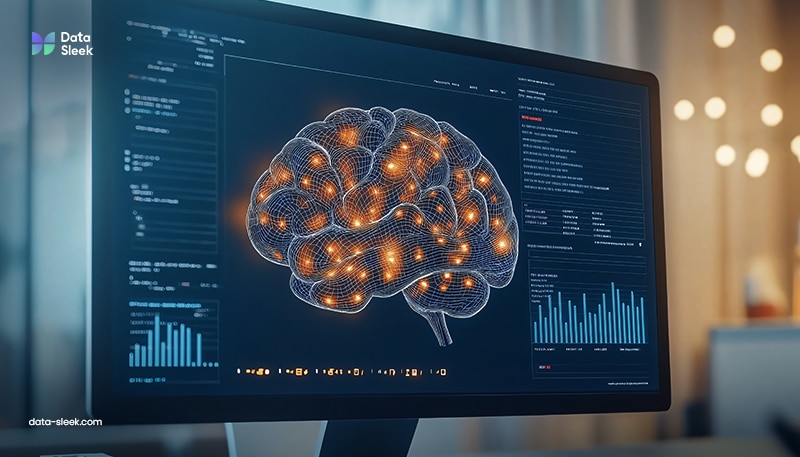
Real-time Monitoring
Advanced visualization techniques allow for real-time monitoring of neural activity through BCIs, providing immediate feedback and insights. For example, real-time fMRI neurofeedback lets patients see their brain activity on a screen while performing tasks. This visual feedback helps patients learn to control their mental states, which can be incredibly useful in treating conditions like chronic pain and depression.
User-friendly Interfaces
Creating user-friendly interfaces ensures that even those with limited computational expertise can understand and engage with the data. BCI devices often have intuitive software that translates complex neural data into easily interpretable visualizations. This makes it accessible for clinicians and patients to monitor brain activity and track treatment progress.

Impact on Diagnoses and Treatment for Nervous System-Related Healthcare
In the computational neuroscience world, BCIs are set to revolutionize the diagnosis and treatment of nervous system-related conditions.
Early Detection
Enhanced data analysis and visualization techniques allow for the earlier detection of neurological disorders such as Alzheimer’s, Parkinson’s, and epilepsy. This early intervention is crucial for managing these conditions more effectively.
Personalized Treatment
By analyzing individual neural patterns, treatments can be tailored to meet each patient’s unique needs. This personalized approach ensures that therapies are more effective and better suited to each patient’s specific condition.
Predictive Models
Advanced computational models can predict disease progression and treatment outcomes, enabling more proactive and effective healthcare interventions. These predictive capabilities help clinicians tailor treatments precisely, improving patient outcomes and optimizing care strategies.
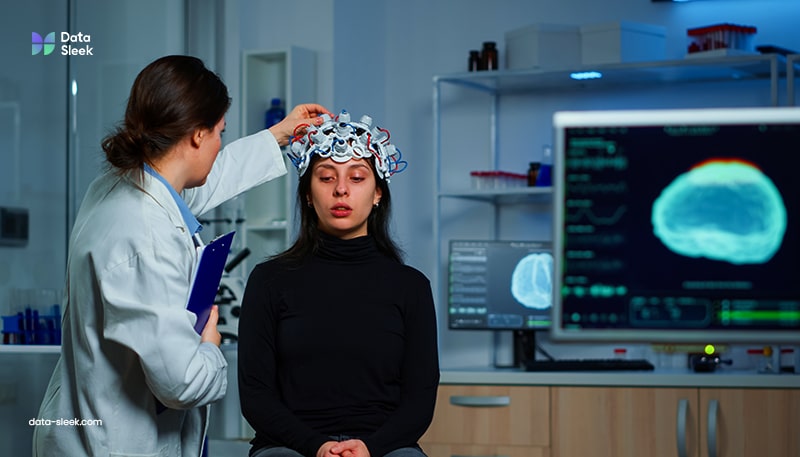
Industry Implications in Computational Neuroscience
The advancements in computational neuroscience and BCIs are set to make a profound impact on healthcare.
- Healthcare Providers: Enhanced diagnostic tools and personalized treatment plans are poised to improve patient outcomes and satisfaction significantly. These innovations will enable healthcare providers to offer more precise and effective care.
- Pharmaceutical Companies: A deeper understanding of neural mechanisms will lead to the development of more effective drugs with fewer side effects. Companies like Biogen are leveraging computational neuroscience to identify novel drug targets for neurological diseases, paving the way for groundbreaking treatments.
- Tech Industry: The tech industry, particularly companies specializing in medical devices and data analytics, will find new opportunities in this burgeoning field. For instance, Kernel offers “neuroscience as a service,” providing advanced neuroimaging tools and data analytics to researchers and healthcare professionals. This opens up new avenues for innovation and application across various sectors, driving the next wave of healthcare advancements.
How Mathematical Models Are Transforming Mental Health Care
Mathematical models in computational neuroscience are revolutionizing mental health care, offering new ways to understand, diagnose, and treat mental health disorders. The integration of advanced neural technologies and sophisticated modeling techniques is opening up possibilities that were previously unimaginable.
Understanding Mental Health Disorders
Mental health conditions like depression, anxiety, and schizophrenia are complex and challenging to diagnose and treat. Mathematical models in computational neuroscience provide deeper insights into the neural underpinnings of these conditions.
- Neural Biomarkers: Researchers are identifying neural biomarkers associated with mental health disorders. For example, abnormal neural oscillations have been linked to schizophrenia, while altered connectivity in certain brain regions is associated with depression. These biomarkers enable more accurate diagnoses and targeted treatments.
- Brain Imaging: Advanced imaging techniques such as fMRI and PET scans offer detailed visualization of neural systems and structures, crucial for detecting and understanding mental health disorders.

How Data Science Can Unlock Insights in Brain Function Research
Data science is revolutionizing brain function research, offering novel treatments extending beyond traditional therapies.
Neurofeedback
Neurofeedback is a biofeedback method that uses real-time monitoring of the nervous system to help patients gain control over their mental states. Computational neuroscientists collaborate closely with patients with devices that provide real-time neurofeedback. Such has been shown to benefit conditions such as anxiety and PTSD.

Transcranial Magnetic Stimulation (TMS)
TMS is a non-invasive procedure that uses magnetic fields to stimulate nerve cells in the brain. It treats depression and other mental health disorders by targeting specific neural circuits. Data science plays a crucial role in optimizing TMS protocols, enhancing treatment efficacy through precise mathematical modeling.
Deep Brain Stimulation (DBS)
DBS involves implanting electrodes in specific brain areas to regulate abnormal neural activity. It is used for treatment-resistant depression and OCD. Advances in data science and computational neuroscience refine DBS techniques, improving patient outcomes and making treatments more effective.
Ethical Considerations in Computational Neuroscience

As we embrace BCIs and computational neuroscience in mental health care, several ethical considerations come to the forefront.
Protecting the privacy and security of neural data is crucial. Patients must provide informed consent for the collection and use of their neural information, ensuring they understand how their data will be used and protected. This transparency builds trust and ensures that patients are fully aware of their rights and the implications of sharing their neural data.

AI algorithms need to be trained on diverse datasets to avoid biases that could lead to unfair treatment recommendations. Continuous monitoring and updating of these algorithms are necessary to ensure fairness and accuracy, preventing any form of discrimination in treatment. By addressing biases, we can create more equitable healthcare solutions that serve all populations effectively.
Moreover, it’s essential to make advanced mental health technologies accessible to everyone, regardless of socioeconomic status. Ensuring equitable access helps prevent increasing health disparities and ensures that all individuals benefit from these technological advancements. By focusing on accessibility, we can ensure that these innovative treatments reach a broader audience, ultimately improving mental health care for all.
Neural Networks for Cutting-Edge Brain Function Research

Neural networks are revolutionizing brain function research, offering unparalleled insights and paving the way for innovative treatments.
Decoding Neural Patterns: Neural networks are masters at spotting complex patterns within massive datasets. In brain function research, they analyze neural activity to reveal intricate patterns linked to various mental states and neurological conditions. This deep dive into brain interactions helps researchers understand how different regions of the brain work together to drive overall brain function.
Boosting Neurofeedback: Neural networks take neurofeedback to the next level by providing more accurate real-time analysis of neural signals. These adaptive models continuously learn and refine their outputs, offering precise feedback to users of devices like the Muse headband. This enhanced precision improves the management of anxiety, PTSD, and stress, making meditation and relaxation practices more effective.

Optimizing Non-invasive Treatments: Neural networks are game-changers for treatments like Transcranial Magnetic Stimulation (TMS). By analyzing patient-specific data, they help fine-tune stimulation protocols, making TMS more effective for treating depression and other mental health disorders. This personalized approach maximizes the benefits of TMS therapy.
Refining Deep Brain Stimulation (DBS): For more invasive treatments like Deep Brain Stimulation (DBS), neural networks are crucial in optimizing electrode placement and stimulation parameters. This level of precision leads to better outcomes for patients with treatment-resistant conditions such as severe depression and OCD, making DBS a more viable option for those in need.
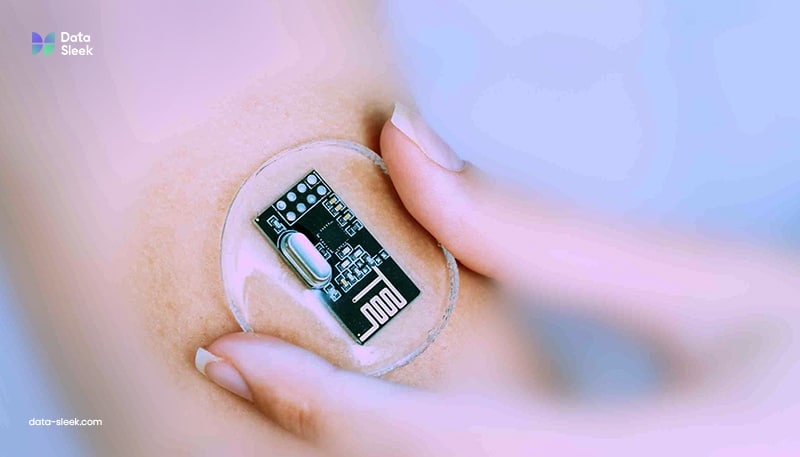
Using Advanced Data Management in Neurotech Innovation
Neurotech research is is at the forefront of handling intricate data types, including neuroimaging (fMRI, PET scans), electrophysiological recordings (EEG, MEG), and real-time brain-computer interface data.
These vast and complex datasets demand substantial storage and sophisticated processing capabilities. Neuroimaging techniques generate high-resolution images that require significant storage and computational power. Continuous data streams from EEG and MEG need real-time or near-real-time analysis. BCIs produce detailed data at high frequencies, necessitating robust data management systems.

Real-time analytics are crucial for the effective operation of BCIs. Systems must process neural signals promptly to detect and respond to specific neural patterns. Similarly, responsive neurostimulation devices rely on real-time data to monitor brain activity and deliver immediate interventions.
To navigate these challenges, neurotech researchers need advanced analytics solutions, including:
- Advanced Statistical Analyses: To understand trends, correlations, and statistical significance within large datasets.
- Machine Learning: For pattern recognition, predictive modeling, and neural signal classification.
- Data Visualization: To transform complex data into intuitive, interpretable visual formats.
- Spatial and Temporal Analysis: For examining neuroimaging data over time, revealing changes in brain structure and activity.
- Signal Processing: To filter noise and extract meaningful information from electrophysiological data.
Is Your Business Future-Ready?
Integrating neural networks and computational neuroscience into brain function research is a testament to the immense potential of data-driven innovation and the rise of machine learning and AI capabilities. As these technologies continue to evolve, the computational neuroscience industry faces significant changes in computational approaches.
Partnering with experts in data architecture is essential for organizations at the forefront of this revolution. Data-Sleek can help build robust data systems that not only manage vast amounts of complex data, but also fuel ongoing innovation in your organization.
We provide the tools and expertise needed to analyze and interpret neural data and empower organizations like yours to achieve better outcomes and drive industry progress.

